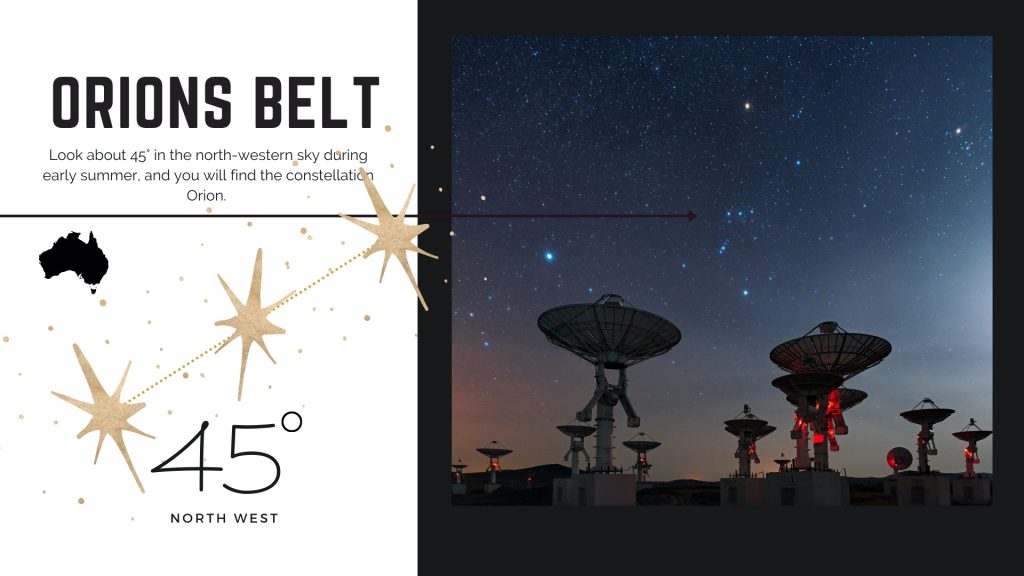Published by: Digital Schools

The Night Sky – There is so Much to Discover.
The night sky is our very own library in the stars. The stars and planets, galaxies and cosmic dust are our ancestors, mythically and realistically. You see, we are truthfully made from the dust of stars.
We first learned how to live in harmony with the earth by reading from the stars. The stars and the constellations that stayed fixed in the sky from the dawn of time, were and are the keeper of records, time, history and memories.
Our people, before written word, or even language, lived life governed by the forces of nature and the cosmic maps. By reading the planetary guide we learned how to farm, how to read time, to navigate the╠řworld╠řand learn our place in it. The cosmos and our╠řstarry guides╠řare what initiated the greatest of all human endeavours, our journey back to them is still our most triumphant.
All we have learned since the beginning of human existence until now – started in╠řthe╠řstars.
![]()
Orions Belt – The warrior in the night sky.
Orions Belt – is a very easy constellation to be viewed almost anywhere in the world. For us Down Under the best place to look is 45╠ř┬░╠řNorth West – best seen on a summer night.
Guest Contributor:╠řEmily Rack
Business Name:╠ř
Publisher:╠řDigital Schools
Emily Rack is a ╠řfreelance creative writer and researcher, visual content creator and designer. She╠řis the head of the content production, publication╠řand editing for Upschool+ Guest Contributors. She designs and produces her own graphics and illustrations and is a╠řseasoned photographer and digital content creator.
╠řEmily is schooled in╠řtraditional yoga, ancient cultural dance from the east, and╠řmindfulness practices from the ancient╠řand new world. She has dedicated her life to╠řresearching and understanding matters of the mind, body and the human╠řexperience╠řand cultivating ways to╠ředucate and╠řcommunicate how to live well here on earth.
Communicating the urgent need for the╠řhuman community to pay attention to the decline of native and endangered╠řspecies is the primary focus of╠řher recent content. Her research and dialogue also include how to self╠řregulate and manage one’s emotions in times of trauma and stress. Gratitude,╠řforgiveness, compassion and╠řawareness are╠řthe keystones to all that she does.
Namaste.
╠ř╠ř
ÔÇöÔÂ─ö-
PUBLISHERÔÇÖS DISCLAIMER: The publisher of this blog post () works in partnership with the school as a 3rd party provider to help build and maintain the school website. Digital Schools sources a range of experts who provide products and/or services to educational institutions and we work with them to produce and publish topical information in the form of blog posts that we think╠ř may be relevant, interesting or topical to families within the community. The views, opinions and content listed in this blog post are that of the guest contributor and/or publisher (Digital Schools). It should be noted that whilst the publisher and guest contributors are acting with the best intentions and in the best interests of the school and their community to provide helpful or interesting information, sometimes the content may not necessarily reflect the views of the school.
The information in this blog post is not meant to be used, nor should it be used, to diagnose or treat any medical condition. For diagnosis or treatment of any medical problem, consult your own physician.╠ř The school and the publisher of this blog post╠ř are not responsible for any person reading or following the information in this article who may experience adverse effects.
Any references to external websites or sources are provided for informational purposes only and do not constitute an endorsement by the school or publisher in any way and the publisher and/or school cannot guarantee the accuracy of the information listed.
If you have feedback on any content on this platform, you can submit it to the publisher using the feedback link provided at the bottom of this page.


